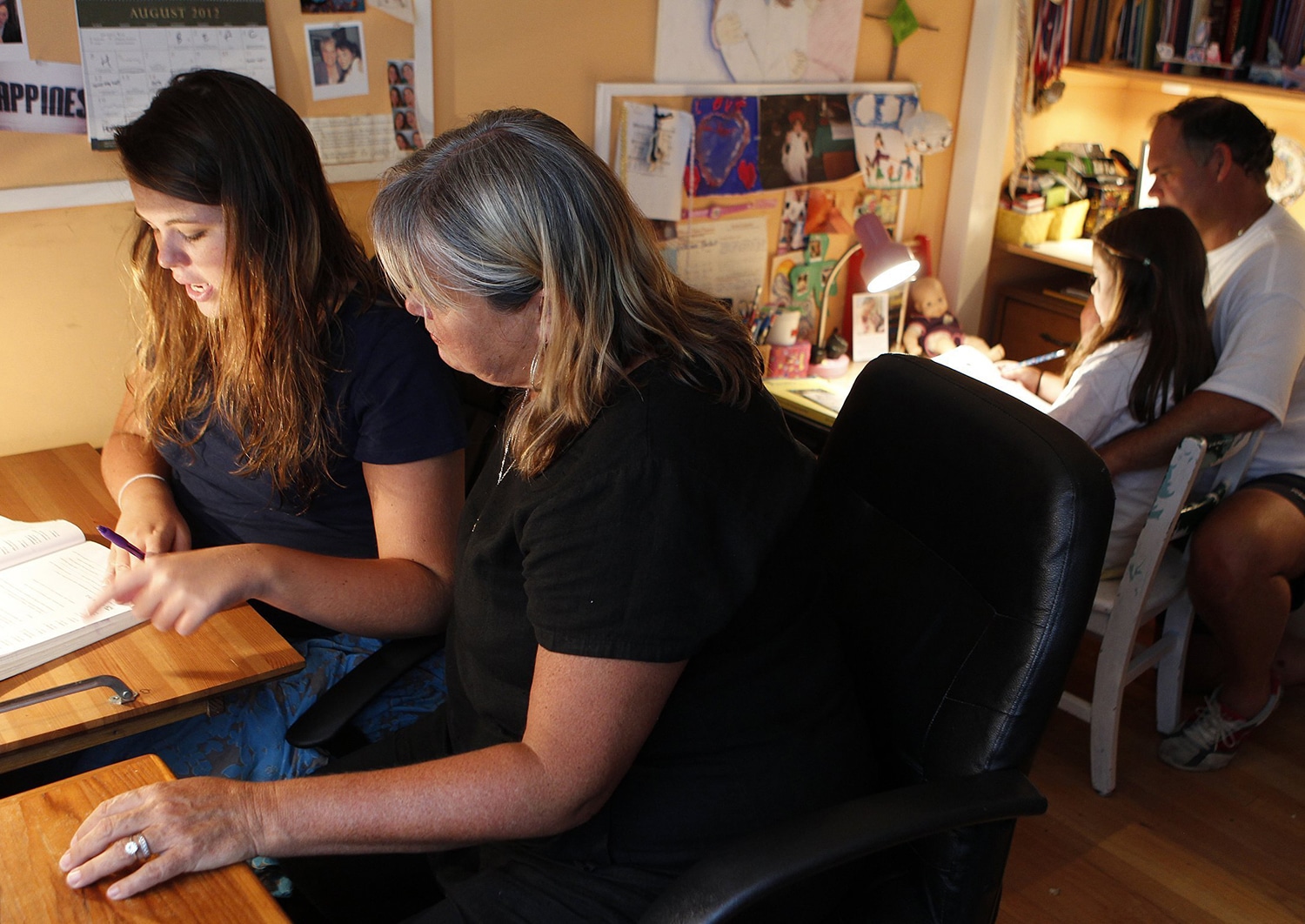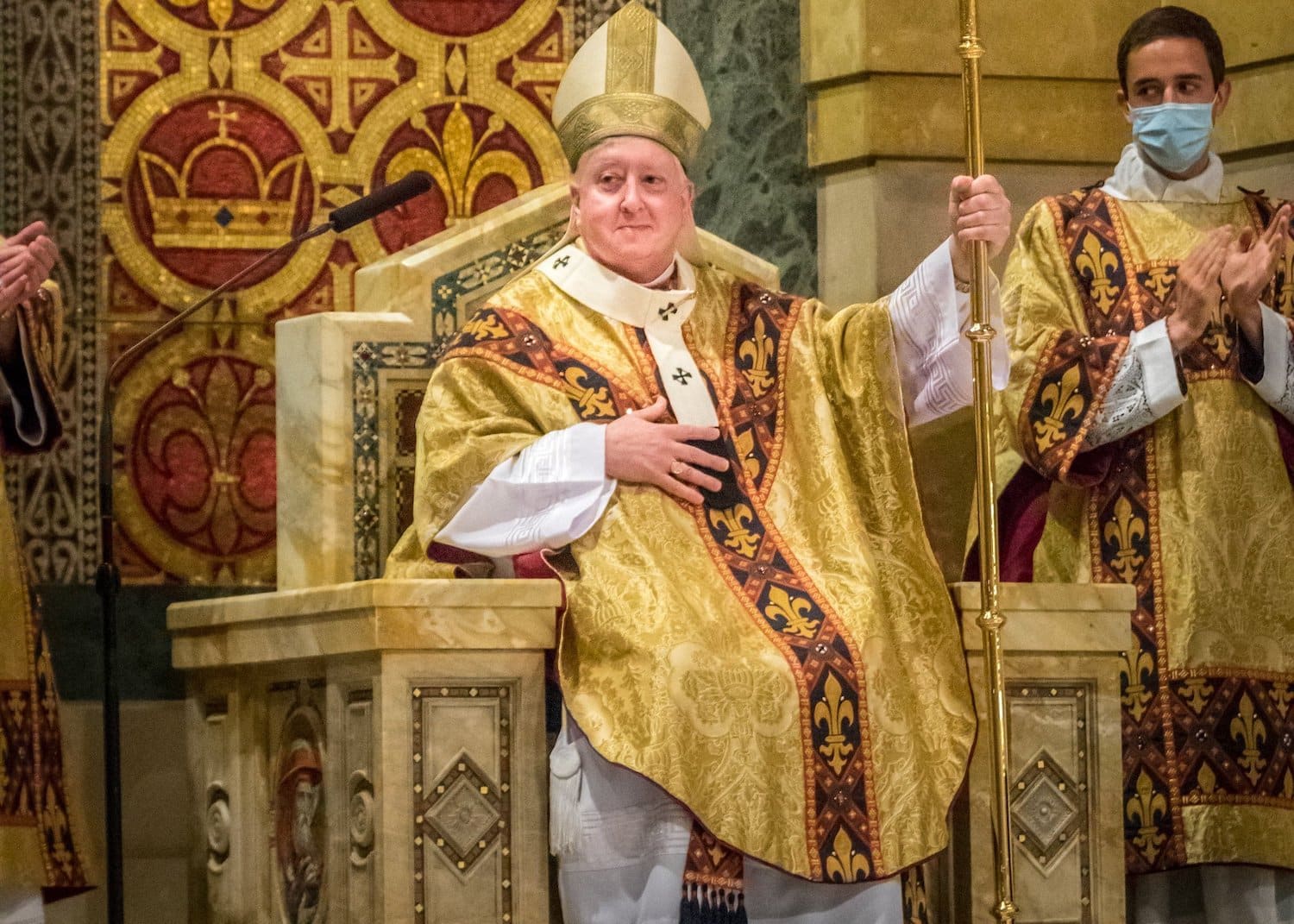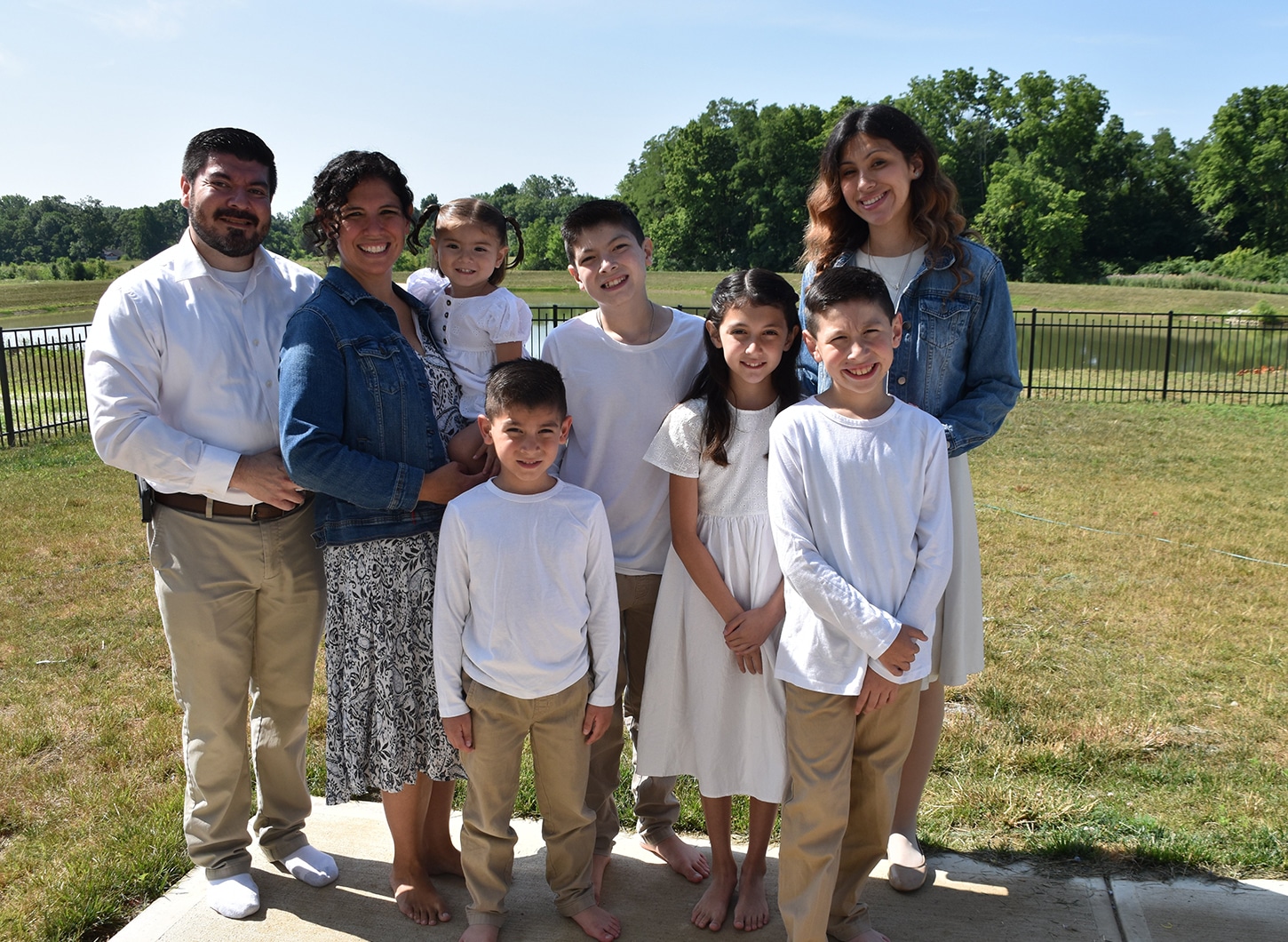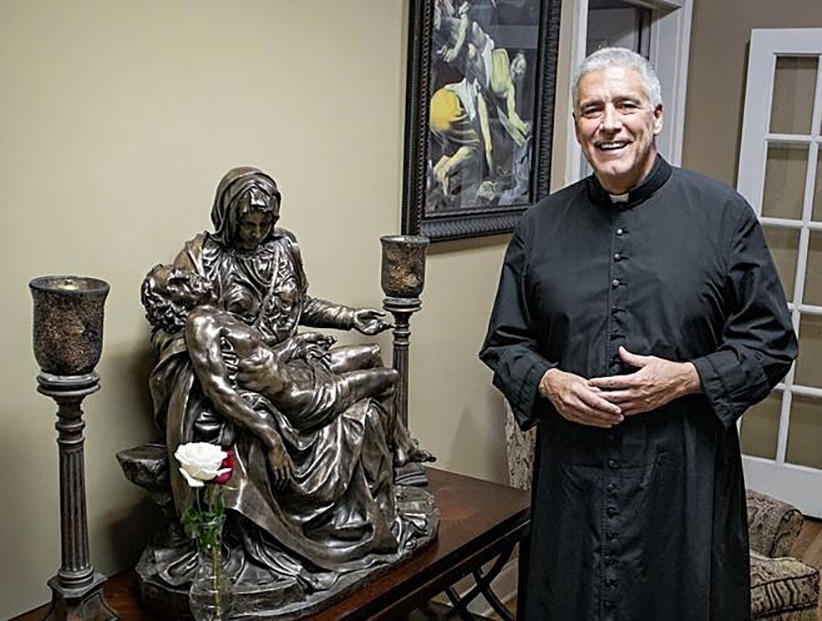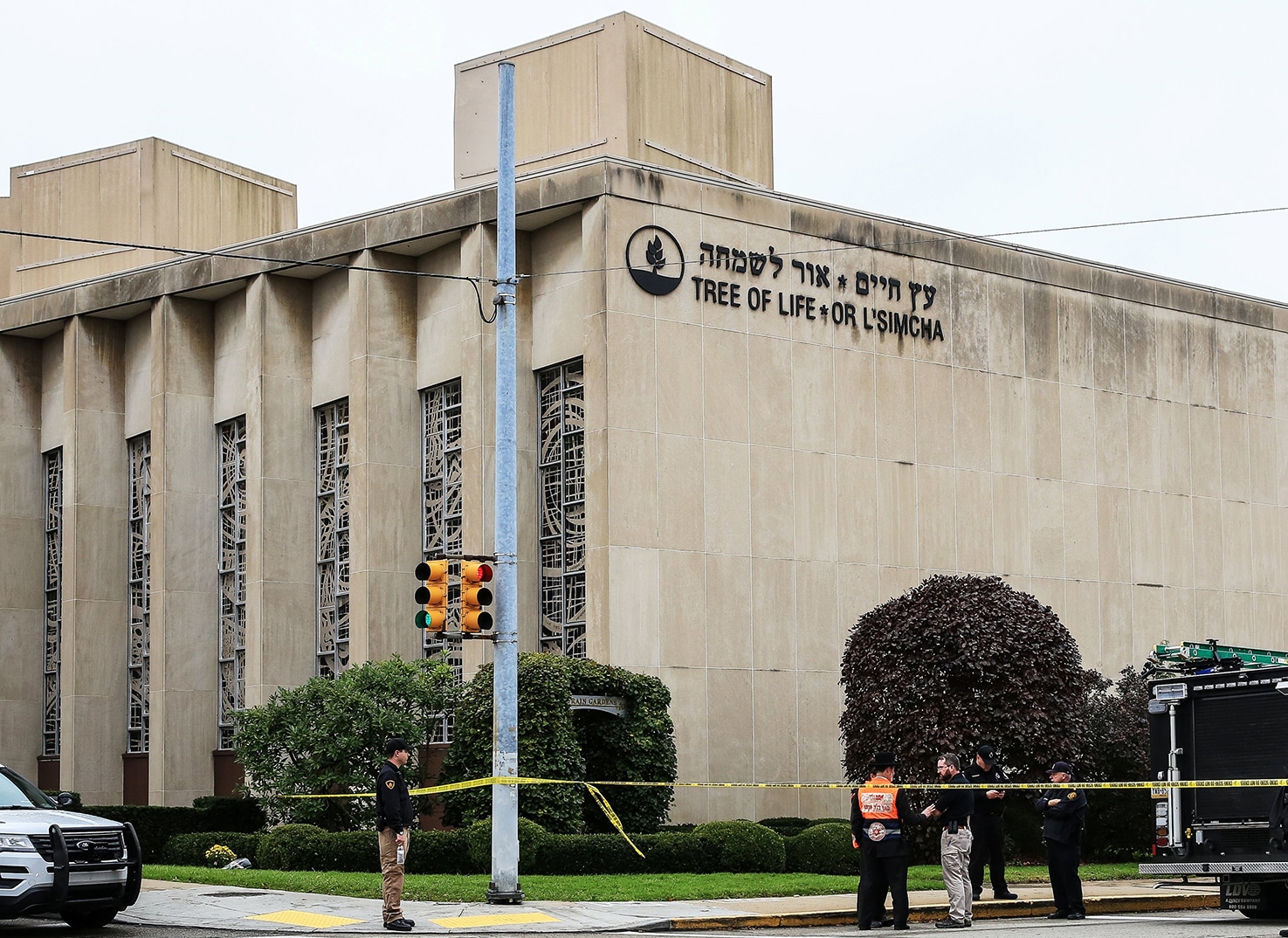(OSV News) — Valerie Faverio had been “enamored” with the idea of home schooling since she was pregnant with her now 9-year-old daughter, but it was the pandemic that pushed her to try it herself.
At the beginning of 2020, Faverio’s children were attending a Catholic school 40 minutes from their home in New York’s Hudson Valley. When the COVID-19 pandemic forced brick-and-mortar schools across the U.S. to shift to distance learning that March, the Faverios, like parents nationwide, got a taste of home-based education.
They also were among Catholic parents that decided to stick with it. Tuition, uniform costs and “endless fundraisers” were a struggle, and they were weary from early rising and piles of homework that, Valerie Faverio, 37, said, left “barely time for any extra activities or family time” with their three kids.
“We were burnt out and miserable,” Faverio said.
While her children returned to their school in the fall of 2020, by spring 2021 Faverio had decided to teach them at home, beginning the next academic year.
Home-school population is growing
According to the National Home Education Research Institute, the number of U.S. home-school students in grades kindergarten to 12 grew from 2.5 million in spring 2019 to 3.1 million, or roughly 6% of school-age children, in the 2021-2022 school year.
“The home-school population had been growing at an estimated 2% to 8% per annum over the past several years, but it grew drastically from 2019-2020 to 2020-2021,” the NHERI’s website states.
Research from Stanford and The Associated Press suggests home-schooling enrollment increased 30% in the U.S. between 2019 and 2022, and some states are passing laws that allow home-schooling families to use public funds to cover education costs.
Seton Home Study School, an accredited school for home learning and the largest provider of Catholic home-schooling materials in the United States, saw a large enrollment boost during the pandemic, said Draper Warren, Seton’s admissions director. The Virginia-based company’s enrollment jumped from about 12,000 students in 2019 to 20,000 in 2020. As traditional schools returned to in-person learning, Seton’s enrollment dropped in 2021 to 17,000. In 2022, enrollment fell slightly again to 15,500, and Warren expects similar numbers for this fall.
The roughly 3,500 student increase from 2019 to now exceeded pre-pandemic projections, Warren said. “For the decade before COVID, we weren’t seeing a ton of growth; we were basically just staying about the same,” he said.
Lifestyle change
Home schooling can mean a major lifestyle change for a family, which can feel scary, he said. He suspects many parents who have switched to home schooling were already thinking about it before the pandemic.
“Parents don’t understand what it will look like if they start home schooling, and so sometimes it’s just easier to keep doing what they’ve been doing,” Warren said. “COVID just kind of shook people out of their complacency.”
While there is no national data specifically tracking the number of Catholics who home-school, Catholic home-schooling experts who spoke to OSV News all reported an increase in interest in their home-schooling programs or resources in the past three years.
“The Catholic trends follow the wider trends,” said Jenny Bales, a Texan who supports fellow Catholic home-schooling parents through her website, Heart of a Mother.
“One of the things we did see, even before COVID (was) obviously a continual rise in home schooling, overall, and among Catholics specifically, because there’s increasingly struggles to help our children not be exposed to messages that are contrary to our faith,” Bales said.
She said some Catholics choose to home-school because they don’t have access to Catholic schools or feel they can’t afford them, or because Catholic schools didn’t provide special services they needed. As the pandemic waned, Bales noted a rise in families choosing to home-school to benefit a child with a learning disability or neurodiversity diagnosis such as ADHD, who do better with one-on-one instruction. Some families also choose home schooling for peak athletes to accommodate training or competitions, or because of health reasons, Warren said.
Various reasons
“It’s been interesting to see that not all Catholic home-schoolers are home schooling for faith-based reasons,” Bales said. “I think probably still the majority are, but there’s … a great number of home-schooling families who come to it for different reasons: to customize curriculum, to help their different children with challenges thrive … and seeing families where home schooling has actually opened for them an opportunity to rediscover their Catholic faith.”
Meanwhile, in recent years, the variety of online resources and communities for home-schoolers have exploded, museums and learning centers offer more weekday programming geared for home-schoolers, and, in many places, home-schooling family meet-ups abound.
A former teacher, Bales has home-schooled all four of her children from kindergarten on, with the oldest two now at universities. While home schooling has gained popularity in recent decades, Bales said it still felt “fringe” and out-of-sight before the pandemic pushed it into the mainstream. In many places, that has also meant that Catholic home-schooling families and groups are becoming a normal and welcome part of typical parish life. They are also increasingly viewed as another educational option for Catholic families alongside — and not necessarily in competition with — Catholic schools.
Increased openness
“One of the blessings of COVID is that more people began to recognize what home schooling is and can be, and it became less weird,” Bales said with a laugh. “Understanding maybe became more openness, and I’ve seen more of that, which has been really beautiful.”
Bales said that the pandemic was a pivotal time for home schooling, but “whether that was beneficial for home schooling or not remains to be seen.” In the past, many families approached home schooling steeped in educational philosophies and approaches that often differed from traditional school models, she said. Bales has noticed many newer home-schooling families “pretty much doing school at home, because everybody did that during COVID, and it’s what they know.”
Bales said she supports that approach if it truly works for a family, but she wonders what could be gained by those families if they took a wider view, studied pedagogy and tailored education to each child.
Options
Bales said that alternative home-school-hybrid models, such as micro schools and learning pods, are also becoming more common, along with home-schooling co-ops. The traditional sense of home schooling has “changed so much that the definition is now very, very different,” she said.
Maureen Wittmann, co-founder of Homeschool Connections, a Catholic home-school curriculum provider, and author of several books on home schooling, said home schooling is also growing among minority families. Homeschool Connections is seeing more Hispanic and African American families choosing home schooling, she said. And, while in many families, mom directs the home schooling, more dads appear to be taking the lead, she said.
The up-close view that traditional-school parents got of their children’s curriculum during the pandemic prompted some to search for something better, she said. “As the pandemic’s ending, we’re also seeing more concerns about social engineering, violence, other things happening in public schools” that compel parents to look at other options, she said.
Wittmann decided she wanted to home-school her future children after being tutored at home at age 13 while recovering from surgery. She went on to home-school all seven of her children, now ages 21 to 33, and now her grandchildren are home-schooled.
“For me, home schooling was never about running away from something, like ‘our local schools are bad,'” said Wittmann, who lives in Michigan. “It was always about, ‘I want my kids to have a beautiful childhood.’ I want education to be an integrated family thing. I want them to have a joy for learning, and I don’t want to suck that joy out of them by being in a classroom in a chair all day. We can home-school anywhere. We can home-school outside under a tree in the woods.”
The pandemic “brought that to people who had never thought about it before, or people who were on the fence but never had the courage to make the jump,” she said.
In the Hudson Valley, Faverio has a year of home schooling under her belt and said she feels confident about the year ahead.
“The most rewarding aspect has been watching my kids make connections between lessons, watching concepts click,” she said. “I can see it in their eyes when they understand something, and it’s such a powerful, amazing moment. Realizing that going at our own pace is just as valid as anyone else’s method was so freeing.”

